Kuba Cloth or Tcaka Dance Skirt
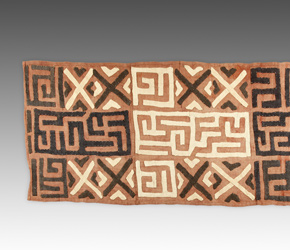 |
|
"Kuba cloth has a unique, geometric style. Some say the designs found on Kuba cloth are based on the tribal scarification patterns of the Kuba people themselves. Others suggest that Kuba cloth designs can be found in crop patterns, as the Kuba are primarily farmers. Regardless of its origins, Kuba cloth remains one of the most distinguished art forms on the entire African continent"
The Kuba Kingdom was created in the 17th century when 19 separate ethnic groups were united under one king. The original peoples were distinguished by their cultural and linguistic differences. A central group, the Bushoong, was the dominant group and to a certain extent imposed its own cultural characteristics and language upon the others. Today, this complex of tribes is still united by kingship and honorary titles as well as ideological and political structure.
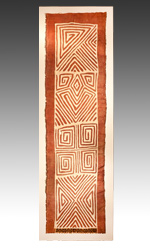 |
|
The life of the Kuba is organized in minute detail from the family level to the political sphere, which consists of a union of chiefdoms recognizing the authority of the “Nym,” the ruler of the Bushoong group. Each chiefdom is independent in its internal affairs, and almost independent in external affairs. The kingdom’s forces of cohesion are military supremacy, tradition, spiritual respect, and royal patronage of the arts. Collectively, all art forms produced by the Kuba peoples can be considered “court art.”
The Kuba are remarkably well adapted to their environment and progressed well beyond a simple subsistence economy. Their working activities are distributed primarily according to gender. The men hunt, fish, clear ground for cultivation, make wine and tools, do repairs, and weave. Women cultivate the crops, gather food, provide water and wood, cook, child-rear, soften textiles, and embroider. There are also joint activities, and the creation of ceremonial textiles is one superlative example of such an activity.
The overproduction of foodstuffs makes possible certain craft specializations. All specialists, except the chief, participate in food production; however, dignitaries, shamans, smiths, jewelers, and mask-makers are the sole practitioners of their trades. Nevertheless, if a craftsman or artisan becomes well-known they may be able to devote more time to their specialist skill. Embroidery is an activity of this kind. Traditionally it is practiced by pregnant women; however, such a high economic value is attached to this work that truly gifted embroiderers specialize in this art form exclusively.
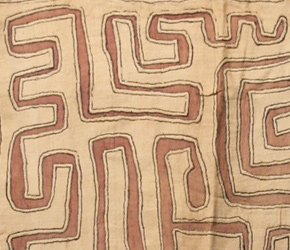 |
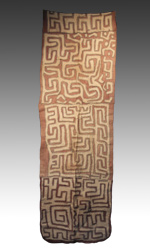 |
Kuba society is devoted to the visual. Nobody is unaware of design. It is everywhere and permeates all aspects of daily and ritual life. And Kuba design is most famous for its unique "visual script," a linear geometric design which is both repetitive and unique at the same time. There are numerous theories as to how Kuba style came about. One theory suggests it is based on tribal scarification patterns. Another suggests the impetus for Kuba design can be found in crop patterns, as the Kuba are primarily farmers. And yet another suggests this type of visual language is the result of divine intervention. Regardless of the origins of this design, the elaborate surface decoration of Kuba textiles is considered one of the most distinguished art forms on the entire African continent.
As noted above, the creation of ceremonial wraps is a joint effort. Men alone are responsible for all stages of fiber preparation and the completion of weaving, whereas women are responsible for softening the textiles and the application of decoration. Ceremonial textiles of this type are worn for ritual dances and special occasions such as weddings, funerals, festivals, and initiation rites. Exceptional examples such as those shown here are often ascribed to Bushoong women artisans weaving specifically for the consumption of the royal court in the Kuba capital village of Nsheng.
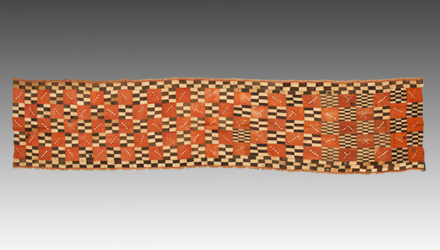
|
|
| |
|
Download this Article: Kuba Cloth or Tcaka Dance Skirt.pdf